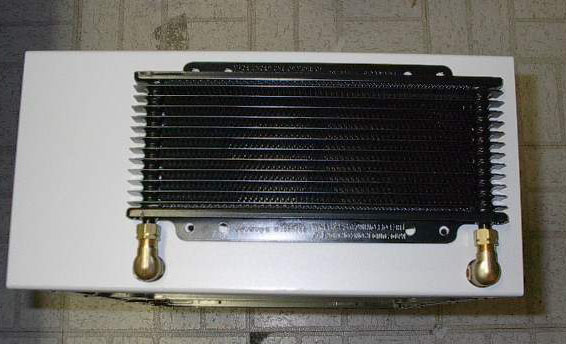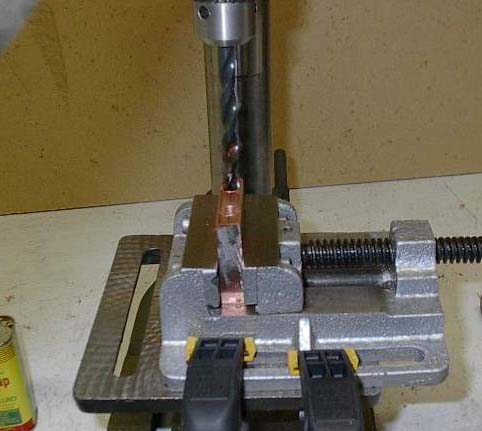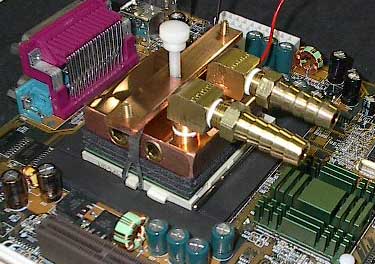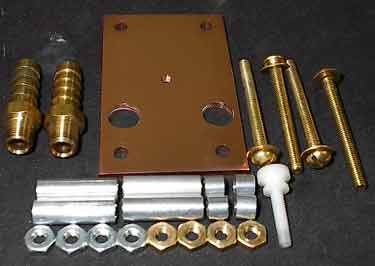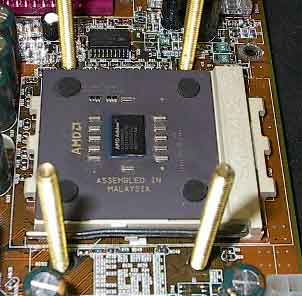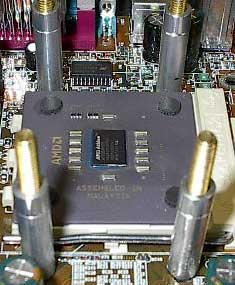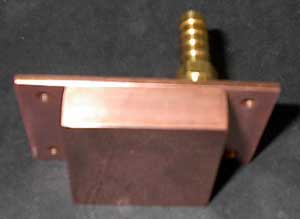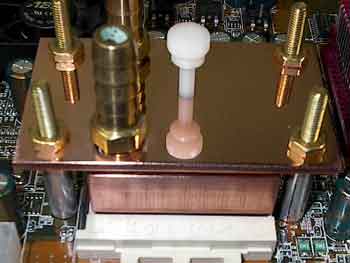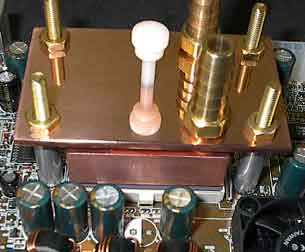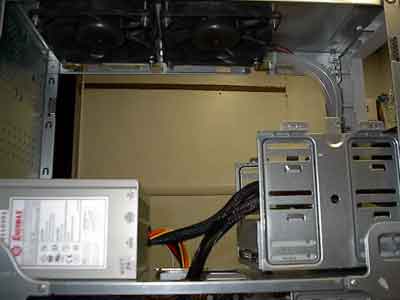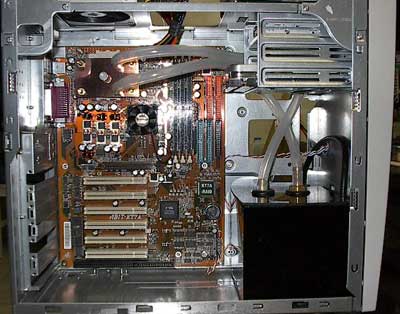|
Now I know a lot of you are wondering where I got that reservoir. The reservoir was hand made by myself. Taking 1/8in thick smoked plexiglass, I cut up some sides and glued it together at the joints and inner seams using Plumbers Goop. It has been in use for two months without a single leak. Despite the fact that my Mag Drive pump can be used inline, I chose to use a reservoir because of the leaky threads that are common with Mag Drive Pumps. Just hand tightening a hose fitting onto a Mag Drive Pump can cause the inlets to separate allowing water to leak. How do I know this? Cause that is what happened to mine and I believe the same thing happened to Joe's. Other than the poor inlet designs, these pumps are amazing and serve my cooling purposes as well as can be expected.
I believe I followed my guidelines as strictly as possible. The only thing that is left is to monitor some temperatures and see what kind of overclocking benefit the water cooling system will offer.
The cpu I am using is a 1.2 gig AXIA Tbird. To achieve its maximum heat potential, I am going to run Prime 95 for one hour straight. This will give me a good idea as to not only how well the cpu is cooled, but how well the coolant is being cooled as well. The coolant I am using is a 10%antifreeze 90%distilled water mixture. First off, let's take some measurements at default speed and voltage.
System : AMD Tbird 1.2ghz, Abit KT7A, 128 meg Infineon RAM, Hercules Geforce2MX
Tbird at 1.2 ghz (default voltage)
Ambient: 70.5:
Idle: cpu: 75 F Water temp: 71.0 F *
Prime95: cpu: 89 F Water temp: 72.1 F *
*note: a thermal probe was placed onto the brass hose inlet on the waterblock in order to monitor water temperatures
Let's take some temperatures with the cpu overclocked now.
Tbird at 1.5 ghz (1.85 volts)
Ambient: 70.7 F
Idle: cpu:78 F Water temp : 71.5 F *
Prime95 : cpu 96 F Water temp : 72.8 F *
*note: a thermal probe was placed onto the brass hose inlet on the waterblock in order to monitor water temperatures
here you have it. I have put together a water cooling system that I am satisfied with. It can run for days on end, it is as quiet as a whisper, and it looks good. From what I have read around the internet at various overclocking sites is that the KT7A socket probe is fairly accurate. Some sites have gone as far as to say that the KT7A socket probe's accuracy is within 2 degrees of the actual core temperature. If you are using the in-socket thermistor of a different motherboard, do not compare these results with your own.
I am using the KT7A socket temp-probe because it has been proven to be accurate enough to warrant its use. In my opinion, the best way to tell if your cooling system is working as efficiently and effectively as possible is to place a thermal probe on to the water block itself. If the water block is getting warm, then the water cooling system has a flaw in it somewhere, whether it is in the efficiency of the block, or the water temp is getting too high. At 1500 mhz running prime95, the temperature probe I placed on the Danger Den Maze never went more than one degree above the actual water temperature. What does this tell me? This tells me that the greatest challenge in lowering cpu temperatures right now is pulling such a large amount of heat off of such a small piece of silicone. The water cooling system I have put together is obviously more than capable enough of cooling a heat source of 120 watts or more.
The weakness of today's water cooling systems lies within the actual heat transfer from cpu to water block. Sure, some blocks perform a little better than others. But why continue to improve these blocks when it is resulting in only a two or three degree improvement in temperature. We should be working on trying to improve the heat transfer to the block. I do not believe that I can lower my temperatures by an appreciable amount without going to a different form of water cooling. The evidence for my statement is this: at 1500 mhz with the cpu under 100% utilization, my water temperature is no more than 2 degrees above room temperature and my waterblock is less than one degree above water temperature all coupled to a mounting system that is placing a maximum amount of pressure onto the cpu, yet my cpu is a full 26 degreees (F) above room temperature. The only solution that I can see in the near future would be direct-water cooling where water is channeled directly onto the cpu core. This would eliminate the efficiency loss when the water block and cpu have to be bonded together using some kind of heat conductive paste or thermal interface material. Will that be my next venture? Possibly. Anyways, enough of my rant. I know a lot of you are wondering where I obtained a lot of my supplies and equipment so I am going to provide a list of items and where they can be purchased.
Thanks for reading my latest venture into water cooling and stay tuned for when I add a 172 watt peltier to this system. Until then, OnDaEdg is out!
|






 Building a Completet Cooling System
Building a Completet Cooling System
